The
October air is as crisp as a new two-dollar Jefferson bill,
which seems ironic as I embark on my adventure.
Remember Linus, Lucy’s little brother from the Peanuts comic strip,
and how he would spend Halloween night waiting for the Great Pumpkin
to appear in his pumpkin patch?
Well, I too am about to engage in a Great Pumpkin odyssey on this fine
day. However, my journey doesn’t take me into the cultivated fields
but rather leads me up into the drier forests cloaking the La Sal Mountains.
Instead of searching for a rounded gourd, my quest is to find a forest
pumpkin - better known as a ponderosa pine.
Foresters nicknamed the old growth ponderosas “pumpkins” or “yellow
bellies” due to the yellow-brown coloration of the tree’s
thick bark. These colorful, large puzzle-like sections of bark overlap
to create a thick, fire proof bark that protects these older trees from
periodic wildfires. In one forestry study on the relationship of ponderosa
pines and wildland fires, the researchers analyzed a thick section of
bark. The researchers counted over 20 fire events in the tree’s
200 year-old-life recorded like scar tissue in the bark’s layers.
The bark’s design is to protect the inner living tissues of the
plant. When Lewis and Clark were on their famous western expedition two
hundred years, they encountered the Nez Perce who, for fun, ignited the
bark on an old tree. The flames raced up the tree sending off a dazzling
shower of sparks as the outer pieces of bark burst into flames, reminding
the adventurers of a firework display. Of course, the fire did no damage
to the tree other than burning up the outermost flakes.
Lewis and Clark are recognized as the first “recorders” of
this magnificent species (the natives knew about it long before Lewis
and Clark). They named it the longleaf pine, after the tree’s 10-inch
long needles. About twenty years after their expedition, David Douglas,
a famous 19th century botanist, renamed the tree ponderosa pine or Pinus
ponderosa (ponderosa means “large”) after the tree’s
immense stature.
The Nez Perce also showed the explorers how to use fire to slowly burn
out the center of a downed tree. This softened the wood for chiseling
and cutting. In this manner, the explorers made several dugout canoes
that they used to float down the Columbia River to the Pacific Ocean.
As I hike through some young stands of ponderosas, I keep in mind this
famous Corps of Discovery adventure. The closely spaced trees, nicknamed
black jacks after their dark and clustered appearance, have yet to experience
a raging wildfire. Their tight spacing and low hung limbs will increase
the likelihood of death during a fire, but the survivors will thrive
in the absence of competition for nutrients, water and sunlight. As the
trees mature, they lose their lower limbs to minimize the upward, crowning
movement of a fire. Instead (hopefully) the fire passes along the ground
and through the lower understory causing little harm to these trees.
As I reach Carpenter Ridge on the north end of the La Sals, I am treated
to a patch of these pumpkins outlined against the October sky. Stout
as pillars and with diameters of 4 to 5 feet, I estimate that the trees
are over 300 years old. This would make them mature trees when Lewis
and Clark were spending the winter of 1805 along the soggy Pacific Northwest
Coast.
After marveling at these forest giants, I collect a few of the softball-sized
cones, careful to avoid the sharp prickles that adorn the thickened tips
of the cone’s scales. These cones are more like souvenirs for me
rather than the scientific collections that Lewis and Clark made for
their boss, President Thomas Jefferson. Through these cones I feel linked
to these great men and to the grandeur of the Great Pumpkin.
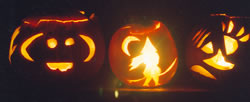
|
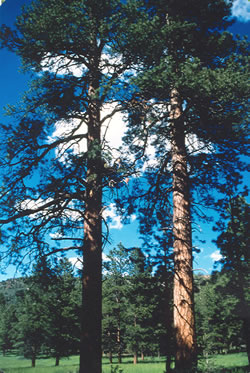
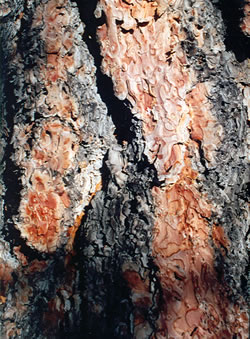
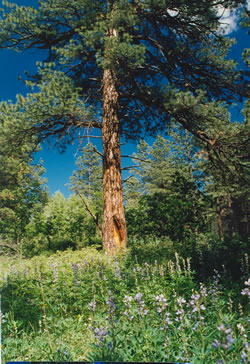
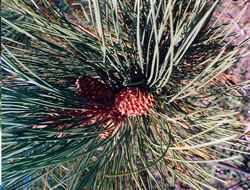
|